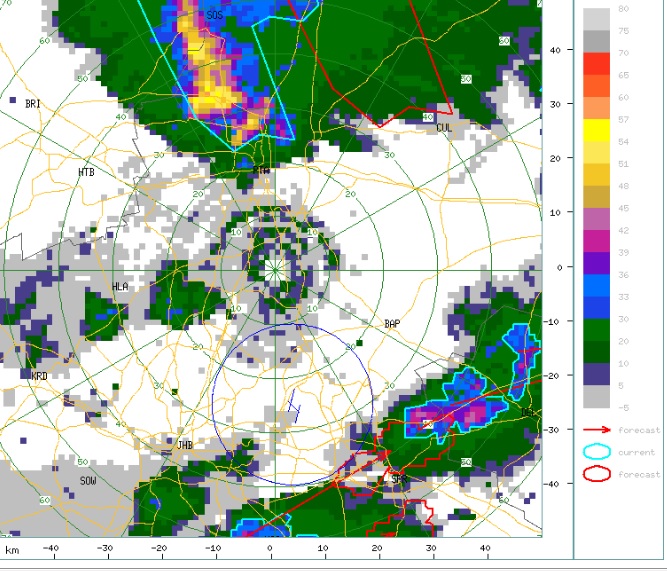
Especially on the South African Highveld, this topic comes up every Summer – with good reason. Thunderstorms are almost a daily occurrence during this time, and their timing can be pretty predictable, in the mid to late afternoon. I once had an instructor who would advise foreign students in particular, that even though the sky may be clear when you take off, the sky can turn ‘black and blue’ in 10 minutes. He was perfectly right. In this part of the world, these storms can develop so quickly you will hardly have the time to say ‘Bob’.
While it is obvious that the majority of pilots will never even consider taking off when there are thunderstorms in the vicinity, yet they can develop unpredictably, and you could find yourself facing a wall of angry blackness in your path, even though the forecast had no mention of it. While this situation may not be your choice, there are some things that can help you out in this situation.
Why are thunderstorms such a hazard to aviation?
Before addressing the best ways of avoiding a thunderstorm, it is good to understand why they are hazardous to us in our aircraft. Briefly, the following elements are threats that are found in, or in the vicinity of thunderstorms:
Wind shear and Turbulence – May cause structural damage to aircraft
Microbursts – Can cause sudden increases in indicated airspeed (IAS) and lift, resulting in the pilot wanting to reduce power to compensate, however, once through the microburst, the aircraft has insufficient lift to maintain flight as a result.
Hail – Large hail can damage the aircraft skin, affecting aerodynamics
Icing – Within the cloud, the icing danger is present from the 0°C to -20°C range.
Lightning – Although similar to a car in the lightning strikes will not affect the occupants of an aircraft, it does affect magnetic compasses and electronic equipment.
Tornadoes – Found in the vicinity of thunderstorms, these can carry wind shear, turbulence and poor visibility, which will affect the handling and structure of your aircraft.
How to avoid a thunderstorm
The number one, and definitely the safest option, is to avoid the storm as far as possible. During the day it is obvious to see the big black clouds and steer away from them, but at night, when all is dark, lightning is your indicator. Knowing just how far to stay away from them may be surprising – Gust fronts may be found 20 – 30km from the storm. These occur when cold air flows out from downdraught, undercutting warm inflowing air, and can have an impact up to 6000ft AGL, causing very strong wind shear and turbulence. Scarily, gust fronts are usually invisible.
Closer to the cloud, normally around 3NM or 5km, microbursts can be active. These are concentrated downdraughts with winds up to 260kph, although these rarely last more than 5 minutes, they can bring down an aircraft. Macrobursts, which are similar to microbursts, can occur up to 7km away.
Having access to weather Apps and overlays, such as those found on Apps such as Easy Cockpit / Easy Weather are also invaluable in helping you to determine which way the storms cells are moving, and the clearest path around one, if there is one available. Here’s how to do it:
Avoid the anvil part, and any thunderstorm by at least 20NM
Remain VFR on top as far as possible.
Maintain VFR conditions below the bases to observe obstacles and avoid the rain shafts.
Never fly directly below a cell.
If you have no option…
If you find yourself in a situation where it is impossible to avoid a thunderstorm, and a precautionary landing is not an option, then there are a few things that can help you manage the situation:
Prepare for a bumpy ride – Tighten harnesses, secure loose objects
Choose the shortest route through the storm, taking the least time possible.
Avoid the icing zone – Enter below the freezing level or above -15°C.
Use turbulent air penetration speed (from your POH) and keep it there.
Pitot heat ON to prevent icing.
Set cockpit lights as bright as possible to prevent dazzle from lightning.
Maintain a constant altitude.
DO NOT alter power settings
DO NOT turn back – Any dramatic turns in these conditions could result in a load factor beyond the aircraft structural limits.
Finally, a precautionary landing is never a bad choice, after all, that is why we are taught how to do them.




Thank you Caroline. Excellent as usual.